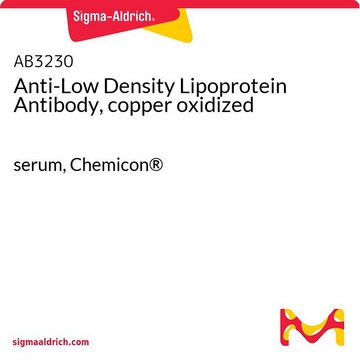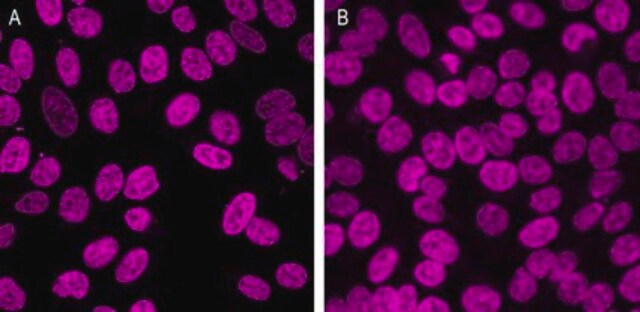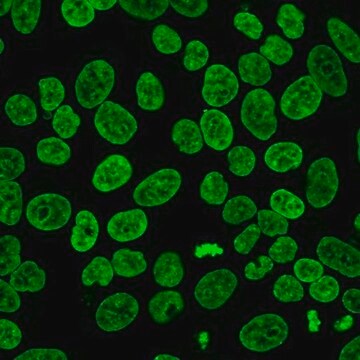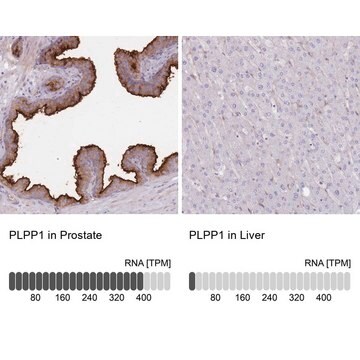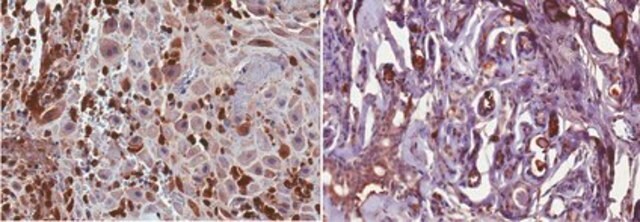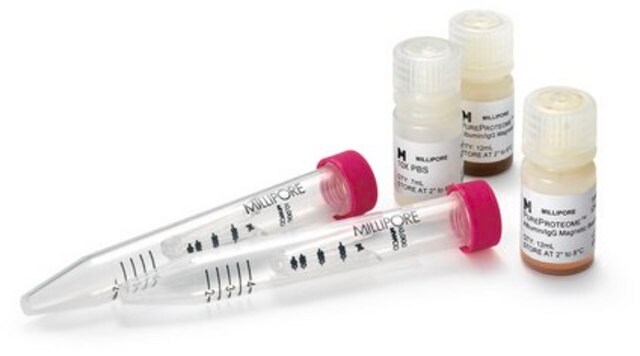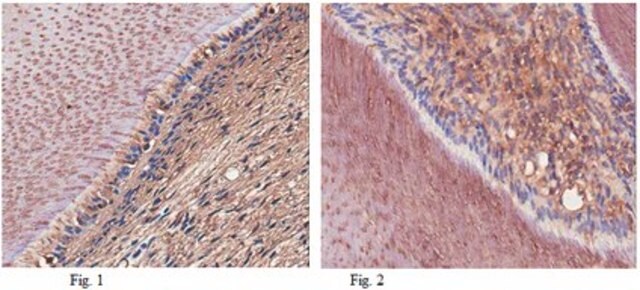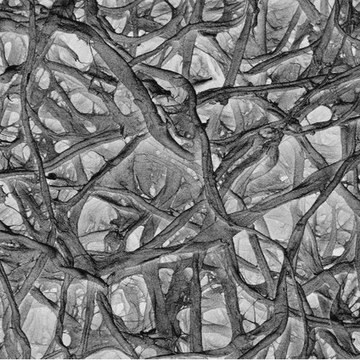MABS1220
Anti-LTP/CETP Antibody, clone 14–8F
clone 14-8F, from mouse
Synonyme(s) :
Cholesteryl ester transfer protein, CETP, Lipid transfer protein I, LTP
About This Item
WB
western blot: suitable
Produits recommandés
Source biologique
mouse
Niveau de qualité
Forme d'anticorps
purified immunoglobulin
Type de produit anticorps
primary antibodies
Clone
14-8F, monoclonal
Espèces réactives
mouse, human, rabbit
Technique(s)
ELISA: suitable
western blot: suitable
Isotype
IgG2aκ
Numéro d'accès UniProt
Conditions d'expédition
wet ice
Modification post-traductionnelle de la cible
unmodified
Informations sur le gène
human ... CETP(1071)
Description générale
Spécificité
Immunogène
Application
ELISA Analysis: A representative lot was conjugated with HRP and used as the detection antibody in combination with clone 3-11D (Cat. No. MABS1219) as the capture antibody for the detection of mouse plasma LTP/CETP by sandwich ELISA (Wu, C.A., et al. (2002). Arterioscler .Thromb. Vasc. Biol. 22(8):1347-1353).
ELISA Analysis: A representative lot, when conjugated with HRP and used as the detection antibody, showed pH-dependent LTP/CETP-binding activity with the maximum reactivity at a weakly acidic condition of pH 5 to 5.5 in sandwich ELISA applications (Saito, K., et al. J. Lipid Res. (1999). 40(11):2013-2021).
Western Blotting Analysis: A representative lot detected both rabbit and human LTP/CETP by Western blotting under either reducing or non-reducing condition (Ko, K.W., et al. (1994). J. Biol. Chem. 269(45):28206-28213).
Inhibits Activity/Function: A representative lot inhibited both rabbit and human LTP/CETP-mediated triglyceride (TG), but not cholesteryl ester (CE), transfer from low density lipoprotein (LDL) to high density lipoprotein (HDL) (Ko, K.W., et al. (1994). J. Biol. Chem. 269(45):28206-28213).
Inhibits Activity/Function: A representative lot effectively inhibited human LTP/CETP-mediated triglyceride (TG) transfer from high density lipoprotein (HDL) to to apoB-containing lipoproteins in human plasma. Clone 14-8F (14-8H) also inhibited cholesteryl ester (CE) transfer in the same assay by 40% (Ko, K.W., et al. (1994). J. Biol. Chem. 269(45):28206-28213).
Signaling
Lipid Metabolism & Weight Regulation
Qualité
Western Blotting Analysis: 0.5 µg/mL of this antibody detected purified human plasma LTP/CETP.
Description de la cible
Forme physique
Stockage et stabilité
Autres remarques
Clause de non-responsabilité
Vous ne trouvez pas le bon produit ?
Essayez notre Outil de sélection de produits.
Code de la classe de stockage
12 - Non Combustible Liquids
Classe de danger pour l'eau (WGK)
WGK 1
Point d'éclair (°F)
Not applicable
Point d'éclair (°C)
Not applicable
Certificats d'analyse (COA)
Recherchez un Certificats d'analyse (COA) en saisissant le numéro de lot du produit. Les numéros de lot figurent sur l'étiquette du produit après les mots "Lot" ou "Batch".
Déjà en possession de ce produit ?
Retrouvez la documentation relative aux produits que vous avez récemment achetés dans la Bibliothèque de documents.
Notre équipe de scientifiques dispose d'une expérience dans tous les secteurs de la recherche, notamment en sciences de la vie, science des matériaux, synthèse chimique, chromatographie, analyse et dans de nombreux autres domaines..
Contacter notre Service technique